
The Enchanting Lares Trek: Peru's Hidden Gem
Discover the Lares Trek in Peru: A Serene Andean Adventure with Stunning Landscapes, Cultural Encounters, and a Gateway to Machu Picchu.
The Lares Trek is a lesser-known but equally stunning alternative to the famous Inca Trail in Peru. This trek takes you through the breathtaking landscapes of the Andean mountains, offering panoramic views of snow-capped peaks, crystal-clear lakes, and picturesque valleys. Unlike the crowded Inca Trail, the Lares Trek allows you to experience the tranquility and untouched beauty of the Peruvian wilderness. One of the highlights of the Lares Trek is the opportunity to visit remote Andean villages. Here, you can witness the daily lives of indigenous Quechua people, who have preserved their traditional customs and attire. The trek also provides a chance to interact with local communities, offering a unique cultural immersion that is hard to find on more popular routes. Throughout the journey, trekkers can enjoy natural hot springs, ancient Inca ruins, and diverse wildlife. The trek typically ends in the town of Ollantaytambo, from where you can take a train to the iconic Machu Picchu. The combination of natural beauty, cultural encounters, and historical significance makes the Lares Trek an unforgettable adventure for any traveler.
Local tips in Lares Trek
- Pack layers of clothing to adapt to the changing weather in the Andes.
- Bring cash for small purchases and tips, as ATMs are scarce in remote areas.
- Acclimatize in Cusco for a few days before starting the trek to avoid altitude sickness.
- Hire a local guide to enrich your experience with historical and cultural insights.
- Don't forget to bring a good pair of hiking boots for the rugged terrain.
- Consider visiting the Lares hot springs to relax your muscles after the trek.
The Enchanting Lares Trek: Peru's Hidden Gem
The Lares Trek is a lesser-known but equally stunning alternative to the famous Inca Trail in Peru. This trek takes you through the breathtaking landscapes of the Andean mountains, offering panoramic views of snow-capped peaks, crystal-clear lakes, and picturesque valleys. Unlike the crowded Inca Trail, the Lares Trek allows you to experience the tranquility and untouched beauty of the Peruvian wilderness. One of the highlights of the Lares Trek is the opportunity to visit remote Andean villages. Here, you can witness the daily lives of indigenous Quechua people, who have preserved their traditional customs and attire. The trek also provides a chance to interact with local communities, offering a unique cultural immersion that is hard to find on more popular routes. Throughout the journey, trekkers can enjoy natural hot springs, ancient Inca ruins, and diverse wildlife. The trek typically ends in the town of Ollantaytambo, from where you can take a train to the iconic Machu Picchu. The combination of natural beauty, cultural encounters, and historical significance makes the Lares Trek an unforgettable adventure for any traveler.
When is the best time to go to Lares Trek?
Iconic landmarks you can’t miss
Museo Inkariy
Explore the rich cultural tapestry of Peru at Museo Inkariy, a unique museum showcasing ancient Andean heritage and contemporary artistry.
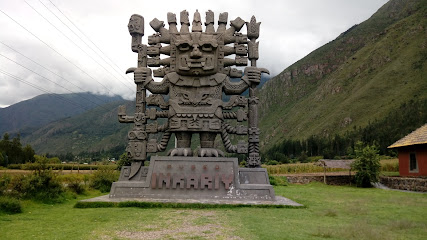
Hot Springs - Lares
Discover the natural healing waters and breathtaking beauty of Hot Springs - Lares, a perfect retreat in the heart of Peru's Andes.
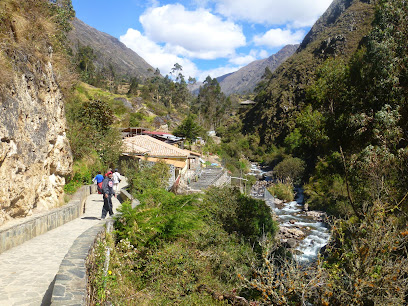
Calle Loreto
Explore Calle Loreto, a historical landmark in Cusco, offering a unique blend of Incan and colonial architecture in a vibrant cultural setting.
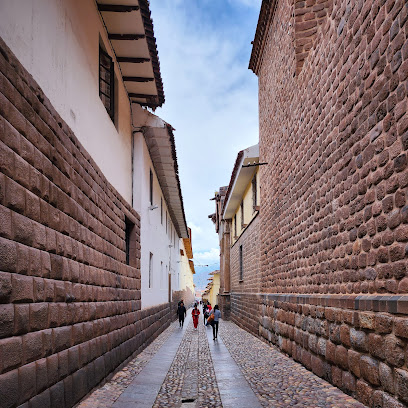
Lares Trip
Unleash your travel dreams with Lares Trip, your trusted travel agency in Cusco, Peru, for unforgettable adventures and cultural experiences.

Canchacanchajasa
Explore the breathtaking beauty of Canchacanchajasa, a majestic mountain peak in Peru offering stunning views and rich biodiversity.
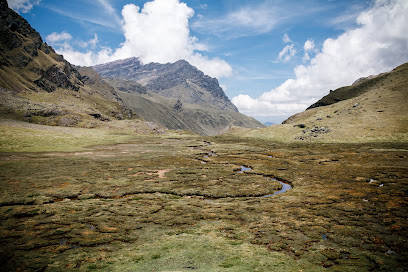
Lares Trek Machu Picchu
Explore the breathtaking landscapes and rich cultures of the Andes with Lares Trek Machu Picchu, your premier tour operator for unforgettable adventures.

Unmissable attractions to see
Centro Arqueológico de Chinchero
Explore the ancient Inca ruins and vibrant weaving culture at Centro Arqueológico de Chinchero, a hidden gem in Peru's Sacred Valley.

Sapantiana Aqueduct
Explore the historic Sapantiana Aqueduct in Cusco, a stunning display of colonial engineering amidst breathtaking Andean landscapes.
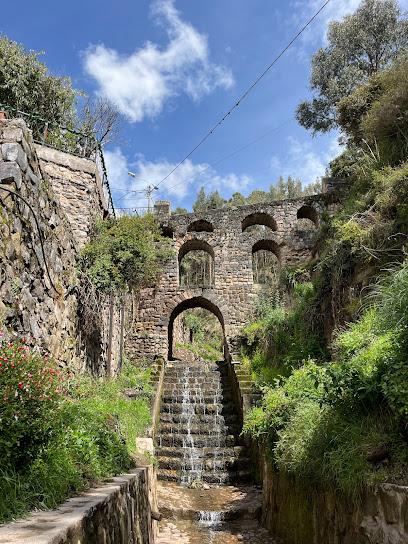
Templo del sol
Discover the Templo del Sol, an iconic Incan temple in Ollantaytambo, where history and breathtaking views come together in a unique cultural experience.
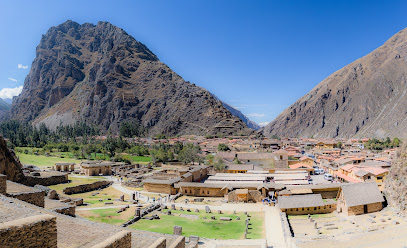
Awana Kancha
Experience the vibrant culture of the Andes at Awana Kancha, where traditional weaving and Andean wildlife come to life in a beautiful setting.
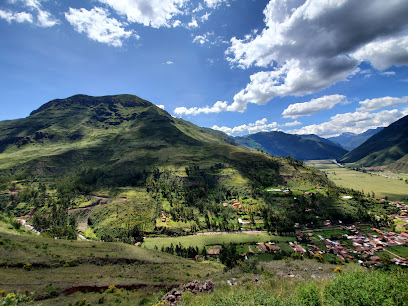
Cataratas de Arín
Experience the breathtaking beauty of Cataratas de Arín, a serene waterfall nestled in the lush landscapes of Calca, Peru, perfect for nature lovers and adventurers.
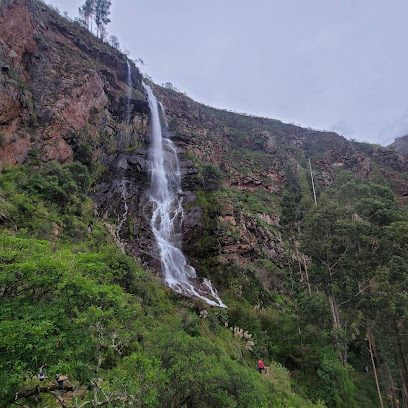
YUCAY MUSEO DE CULTURA VIVA
Experience the rich heritage of the Andes at Yucay Museo de Cultura Viva, where vibrant culture and history come alive in every exhibit.
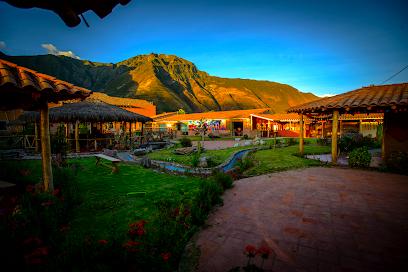
Ruinas ollantaytambo
Discover the breathtaking Incan ruins of Ollantaytambo, a UNESCO World Heritage Site, nestled in Peru's Sacred Valley.
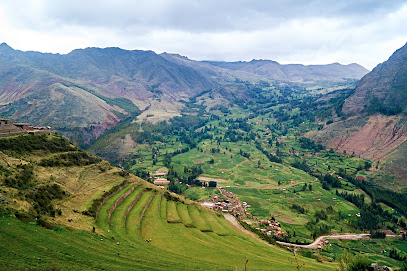
Kusicancha
Explore the rich cultural heritage of Cusco at Kusicancha, a historic museum filled with Incan treasures and serene gardens.

Museo de Sitio de Chinchero
Explore the rich cultural heritage and archaeological treasures at Museo de Sitio de Chinchero in the heart of the Andes.

CENTRO ARQUEOLOGICO DE URCO
Discover the enchanting ruins of Centro Arqueologico de Urco, a mesmerizing archaeological site in Calca, Peru, rich in history and natural beauty.
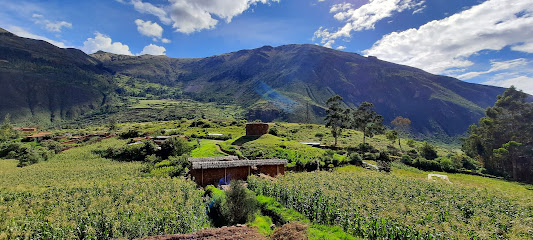
Zona X
Discover the vibrant culture and rich heritage of Cusco at Zona X, a must-visit tourist attraction for an unforgettable Peruvian experience.
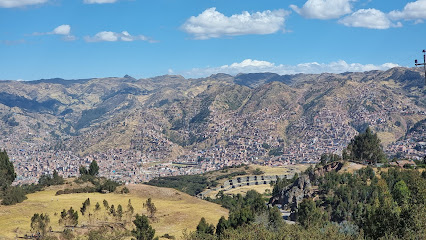
Centro Arqueologico Racchi - Machuqolqa
Explore the breathtaking ruins of Centro Arqueologico Racchi - Machuqolqa, a stunning testament to the Incan civilization's architectural mastery in Peru.

Llama Pack Project
Explore sustainable travel and connect with nature at the Llama Pack Project, a unique eco-tourism destination in the Sacred Valley of Peru.

Calle Loreto
Explore Calle Loreto, a historical landmark in Cusco rich with Inca heritage, stunning architecture, and vibrant local culture, perfect for every traveler.
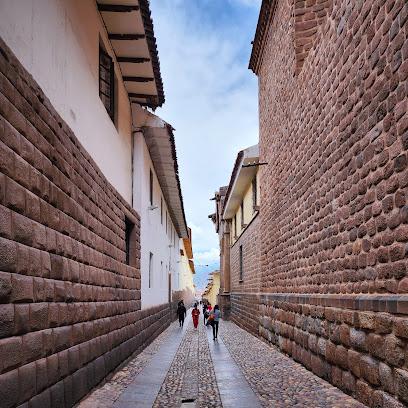
Parque Temático Extremo Saqsayki
Experience thrilling adventures amidst stunning Andean landscapes at Parque Temático Extremo Saqsayki in Cusco, Peru.
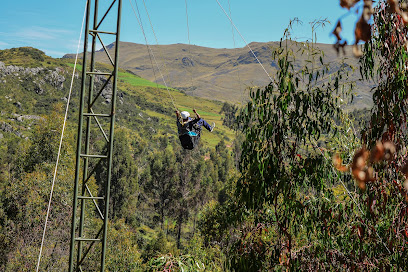
Essential places to dine
Don Angel Inka Casona Restaurant
Experience authentic Peruvian flavors at Don Angel Inka Casona Restaurant in Maras – where every dish tells a story.
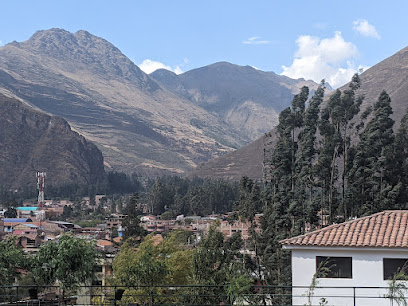
Hacienda Puka Punku Restaurante
Experience authentic Peruvian cuisine at Hacienda Puka Punku Restaurante in Moccopata - A culinary haven showcasing local flavors.
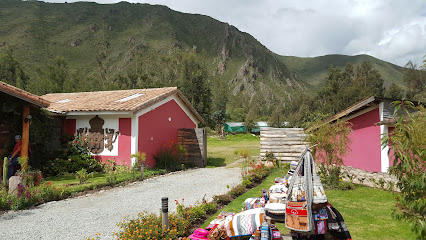
Pakakuna Restaurante
Savor authentic Peruvian cuisine at Pakakuna Restaurante in Urubamba - a culinary journey through rich flavors and local traditions.
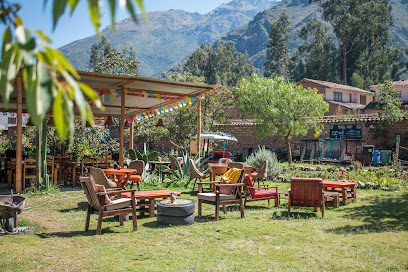
Hatuchay Restaurant Craft Beer & Peruvian Cuisine
Savor the essence of Peru at Hatuchay Restaurant with exquisite local cuisine and a selection of craft beers in vibrant Cusco.
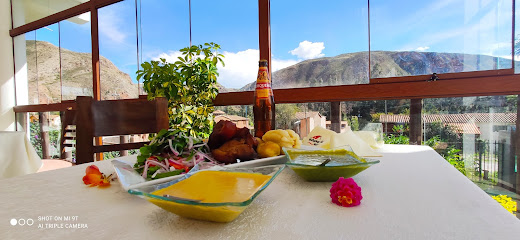
Pizza Wasi
Experience the perfect fusion of Italian pizza and Peruvian flavors at Pizza Wasi in Urubamba's scenic Sacred Valley.

Hacienda Huayoccari
Discover authentic Peruvian cuisine at Hacienda Huayoccari – where taste meets breathtaking views in Huycho.
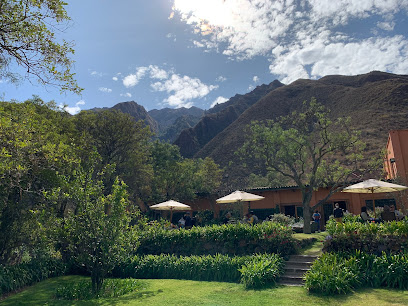
Inti Killa restaurant
Discover the essence of Peru at Inti Killa Restaurant in Ollantaytambo, where traditional flavors meet warm hospitality.

La Bajadita Resto Burger
Experience mouthwatering burgers at La Bajadita Resto Burger in Urubamba – where local flavors meet delightful dining.
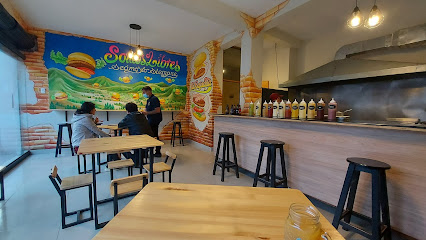
Apu Ausangate Restaurant
Experience authentic Peruvian flavors amidst breathtaking views at Apu Ausangate Restaurant in Ollantaytambo.
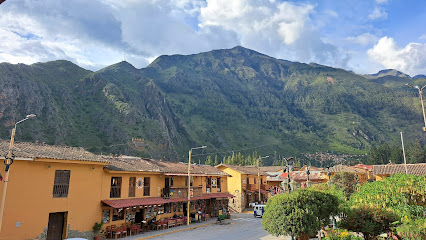
El museo de la papa rest
Experience authentic Peruvian cuisine at El Museo de la Papa in Urubamba—where tradition meets flavor amidst stunning landscapes.

Native Peruvian Restaurant
Discover authentic Peruvian cuisine with a modern twist at Native Peruvian Restaurant in Urubamba - A must-visit for food lovers!
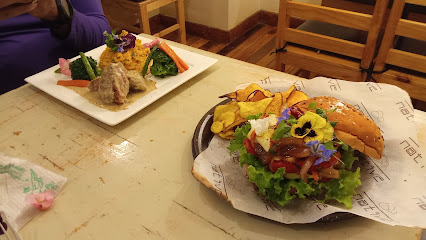
Hawa Restaurant
Experience authentic Peruvian cuisine at Hawa Restaurant in Sacred Valley - where tradition meets innovation amidst breathtaking landscapes.
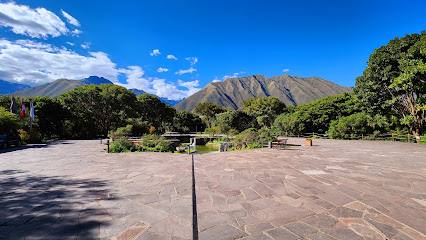
Tres Keros
Discover exceptional Peruvian cuisine at Tres Keros in Urubamba - a perfect blend of tradition and modernity awaits you.
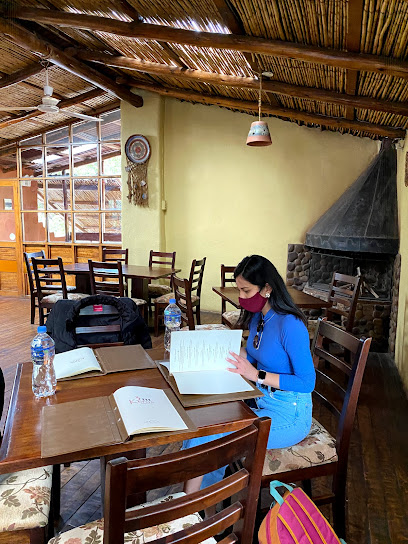
JACARANDA Restaurante
Discover authentic Peruvian flavors at Jacaranda Restaurante in Calca – a culinary experience that embodies tradition and taste.
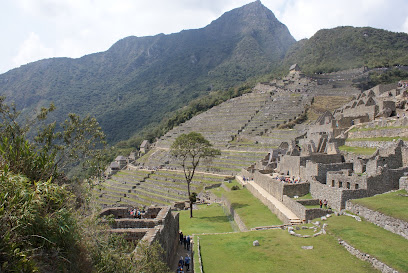
Bosque del Rio Restaurante
Discover a unique blend of Peruvian and German cuisine at Bosque del Rio Restaurante with stunning views in Lamay's scenic landscape.
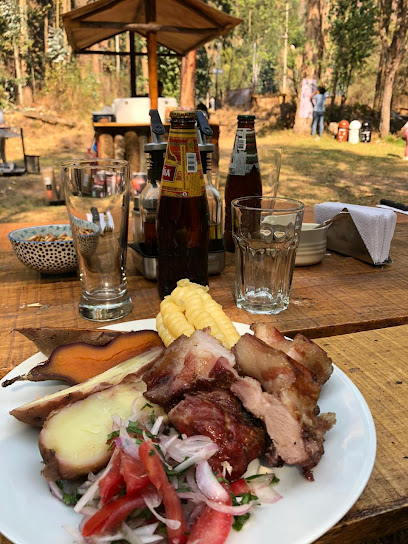
Markets, malls and hidden boutiques
Handicraft Center Cusco
Explore the vibrant world of Peruvian crafts at Handicraft Center Cusco, where every purchase supports local artisans and preserves cultural heritage.
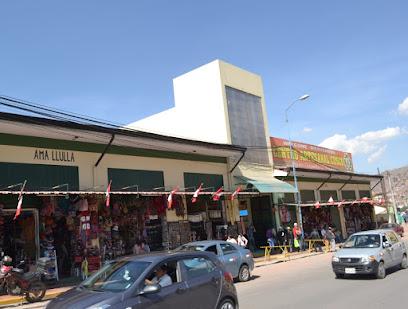
Hot Springs - Lares
Discover the rejuvenating power of Hot Springs - Lares, a serene escape in the Andes with healing thermal waters and breathtaking mountain views.
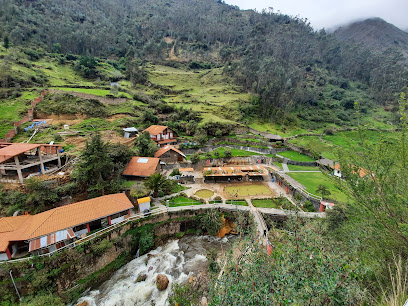
ARTESANÍAS ASUNTA
Explore the heart of Peruvian craftsmanship at ARTESANÍAS ASUNTA, a hub for unique handicrafts and artisanal treasures in Cusco.
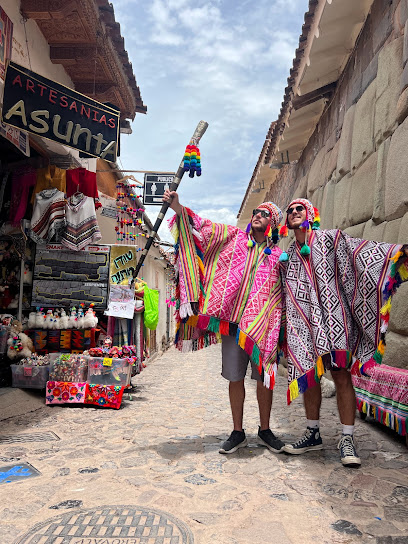
EKEKOS SAN BLAS -art & COLORS
Discover the vibrant world of Peruvian handicrafts at EKEKOS SAN BLAS, where art and culture come to life in every unique piece.
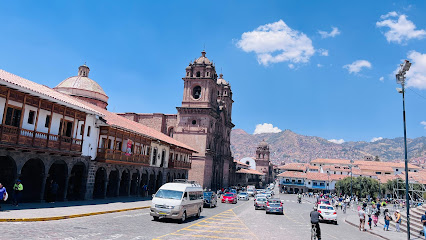
El Zorro de Arriba · Work Café Coliving
Experience the perfect blend of exceptional coffee and a vibrant coworking atmosphere at El Zorro de Arriba in Urubamba, Peru.
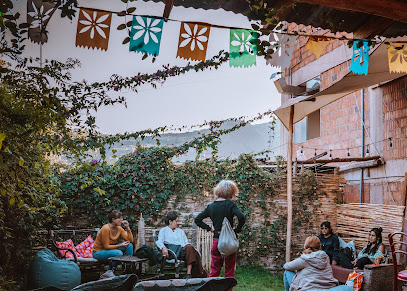
C.P Arin
Explore the vibrant flavors of Peru at C.P Arin, a grocery store offering fresh produce and local delicacies for an authentic shopping experience.
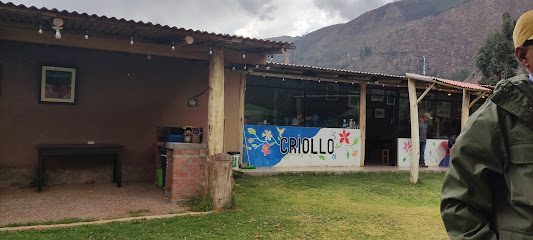
Minimarket llipimpaq
Discover local flavors and essentials at Minimarket llipimpaq, the go-to supermarket for tourists in the area, open daily from 6 AM to 9 PM.
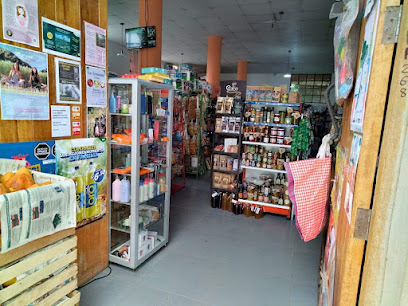
Boticaria Hanpikuy
Discover unique Peruvian souvenirs and local delicacies at Boticaria Hanpikuy, a charming general store in the heart of Yucay.

Boom _ Muebles Y Arte
Explore Boom Muebles Y Arte in Urquillos for unique furniture and artisanal decor that beautifully showcases Peruvian craftsmanship.

Boutique Jazmin Handicraft store :)
Explore the vibrant artistry of Peru at Boutique Jazmin Handicraft Store, where local craftsmanship meets unique souvenirs.
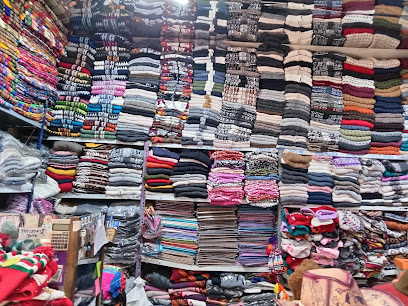
Britt Shop Libertador
Explore Britt Shop Libertador for authentic Peruvian handicrafts and unique souvenirs in the enchanting Sacred Valley.
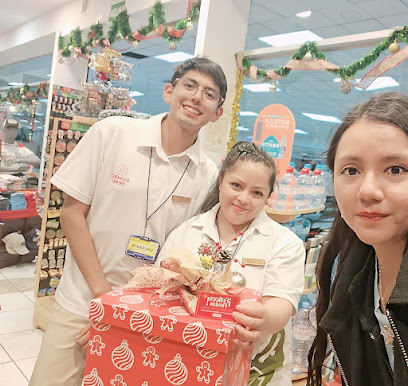
Todos market
Discover the vibrant flavors of Peru at Todos Market in El Valle, where fresh produce and artisanal goods await your taste buds.

Rupa Rupa Coffee & Concept Store
Discover Rupa Rupa Coffee & Concept Store in Urubamba for exquisite coffee, local culture, and a cozy atmosphere that captures the spirit of the Andes.

Lares Trip
Experience the Best of Peru with Lares Trip - Your Trusted Travel Agency in Cusco
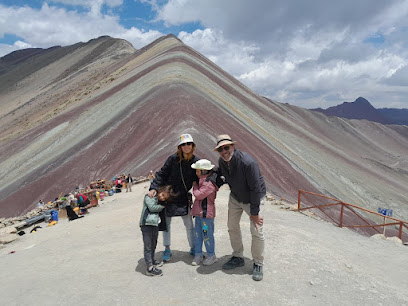
Ayllu
Discover traditional Peruvian craftsmanship and unique souvenirs at Ayllu in Urubamba, a charming store that reflects the heart of local culture.
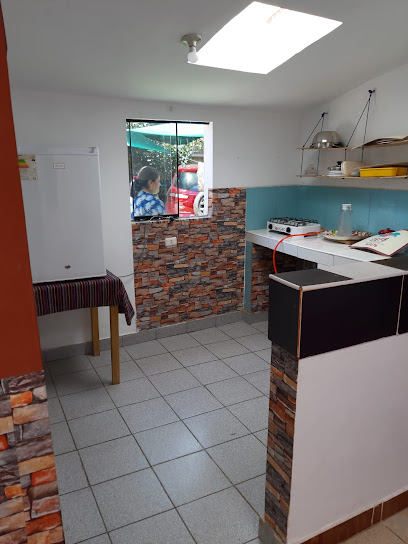
Essential bars & hidden hideouts
LIMBUS RESTOBAR
Experience the taste of Cusco at LIMBUS RESTOBAR, where delicious Peruvian cuisine meets breathtaking views.
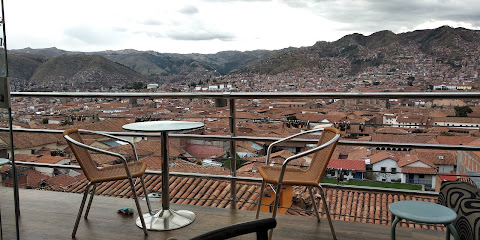
Molly's Irish Bar and Restaurant Cusco
Experience a lively Irish pub atmosphere in Cusco, featuring delicious food, live music, and a friendly ambiance perfect for relaxation.
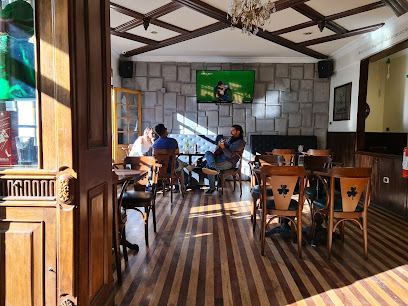
Republica Del Pisco - Cusco
Discover the rich flavors of Peru at Republica Del Pisco in Cusco, where traditional cuisine meets the finest Pisco cocktails in a lively atmosphere.
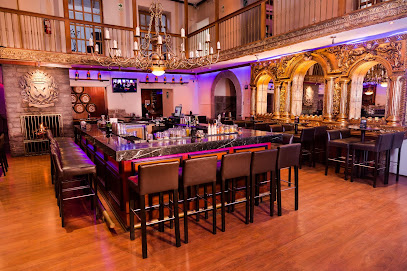
Mapacho Craft Beer Restaurant
Discover the unique flavors of Peru at Mapacho Craft Beer Restaurant, where traditional dishes meet artisanal brews in a vibrant setting.
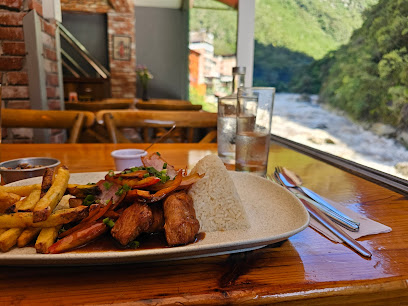
La chupiteria the shot bar
Experience the vibrant nightlife of Cusco at La Chupiteria, a shot bar offering unique drinks and a lively atmosphere in the heart of the city.
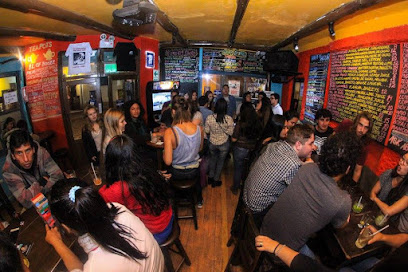
Wild Rover Cusco
Discover the vibrant community and cultural richness at Wild Rover Cusco, your ideal hostel and Irish pub in the heart of Peru's historic capital.
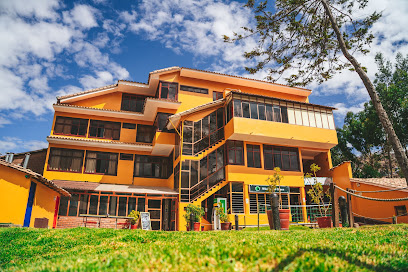
Loki Cusco
Experience the vibrant nightlife of Cusco at Loki Cusco, a lively bar and hostel where adventure and camaraderie await every traveler.
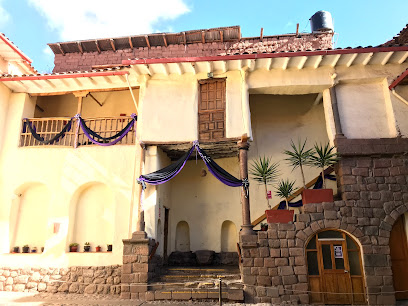
Hanz craft beer & restaurant
Experience the vibrant flavors of Peru at Hanz Craft Beer & Restaurant, where local cuisine meets exceptional craft brews in the heart of Cusco.
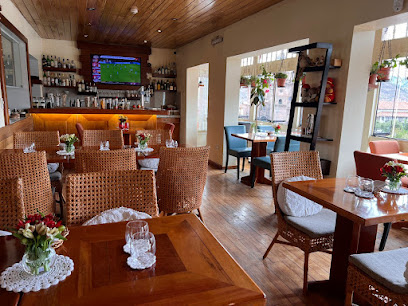
Paddy's Irish Pub
Discover Paddy's Irish Pub in Cusco: where Irish charm meets Peruvian warmth in a lively and welcoming atmosphere.
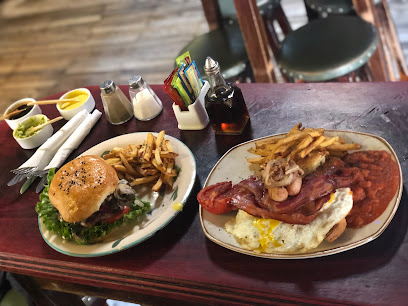
ViewHouse Resto bar
Discover the vibrant flavors of Peru at ViewHouse Resto Bar, a gastropub offering a unique dining experience with stunning views in Cusco.
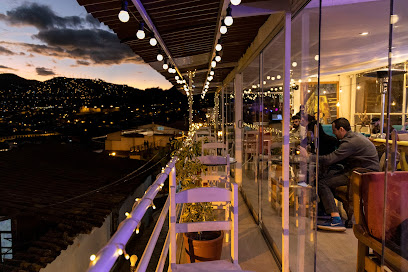
Km 0
Discover the vibrant grill of Km 0 in Cusco, where authentic Peruvian flavors meet a lively atmosphere in the historic center.
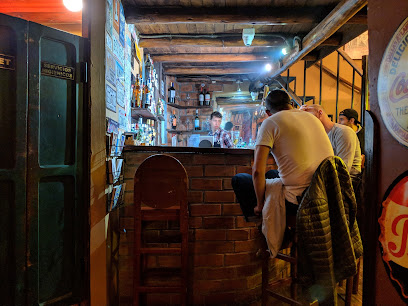
Cervecería Willkamayu
Discover the vibrant culture of Urubamba at Cervecería Willkamayu, where local craft beers and a welcoming atmosphere await you.
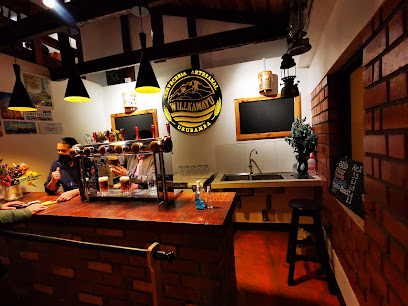
Blackbird Club
Discover the bustling nightlife of Cusco at Blackbird Club, where live music and delightful drinks create an unforgettable evening.
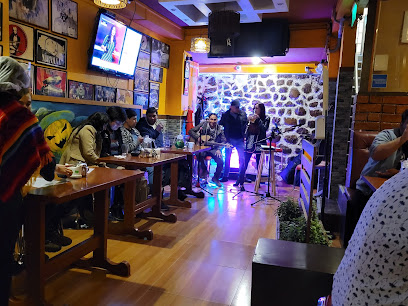
Dr Beer & Miss Potato
Experience the vibrant flavors and friendly atmosphere of Dr Beer & Miss Potato in the heart of Cusco, where culinary creativity meets local tradition.
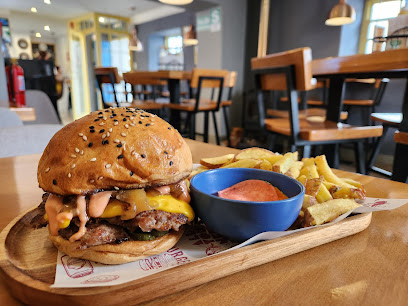
Black Cat Bar Cusco - Craft Cocktails & Spirits
Discover the vibrant nightlife of Cusco at Black Cat Bar, where craft cocktails and local flavors come together in a cozy atmosphere.
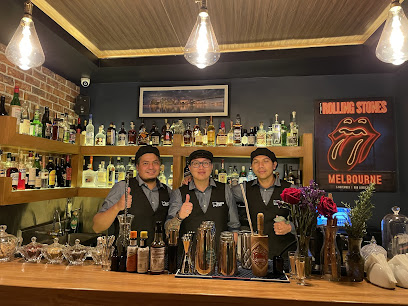
Local Phrases about Lares Trek
-
- Hello¡Hola!
[oh-lah] - Goodbye¡Adiós!
[ah-dee-ohs] - YesSí
[see] - NoNo
[noh] - Please/You're welcomePor favor/De nada
[por fah-vor/de nah-dah] - Thank youGracias
[grah-see-ahs] - Excuse me/SorryPerdón/Lo siento
[pair-dohn/loh see-en-toh] - How are you?¿Cómo estás?
[koh-moh ehs-tahs] - Fine. And you?Bien. ¿Y tú?
[bee-ehn. ee too] - Do you speak English?¿Hablas inglés?
[ah-blahs een-glays] - I don't understandNo entiendo
[noh ehn-tee-ehn-doh]
- Hello¡Hola!
-
- I'd like to see the menu, pleaseMe gustaría ver el menú, por favor
[meh goos-tah-ree-ah behr ehl meh-noo, poor fah-vor] - I don't eat meatNo como carne
[noh koh-moh kahr-neh] - Cheers!¡Salud!
[sah-lood] - I would like to pay, pleaseMe gustaría pagar, por favor
[meh goos-tah-ree-ah pah-gahr, poor fah-vor]
- I'd like to see the menu, pleaseMe gustaría ver el menú, por favor
-
- Help!¡Ayuda!
[ah-yoo-dah] - Go away!¡Vete!
[veh-teh] - Call the Police!¡Llama a la Policía!
[yah-mah ah lah poh-lee-see-ah] - Call a doctor!¡Llama a un doctor!
[yah-mah ah oon dohk-tohr] - I'm lostEstoy perdido
[ehs-toy pair-dee-doh] - I'm illEstoy enfermo
[ehs-toy ehn-fehr-moh]
- Help!¡Ayuda!
-
- I'd like to buy...Me gustaría comprar...
[meh goos-tah-ree-ah kohm-prahr] - I'm just lookingSolo estoy mirando
[soh-loh ehs-toy mee-rahn-doh] - How much is it?¿Cuánto cuesta?
[kwan-toh kwehs-tah] - That's too expensiveEsto es demasiado caro
[ehs-toh ehs deh-mah-see-ah-doh kah-roh] - Can you lower the price?¿Puede bajar el precio?
[pweh-deh bah-har ehl pree-see-oh]
- I'd like to buy...Me gustaría comprar...
-
- What time is it?¿Qué hora es?
[keh oh-rah ehs] - It's one o'clockEs la una
[ehs lah oo-nah] - Half past (10)Y media (10)
[ee meh-dee-ah (deez)] - MorningMañana
[mah-nyah-nah] - AfternoonTarde
[tahr-deh] - EveningNoche
[noh-cheh] - YesterdayAyer
[ah-yehr] - TodayHoy
[oy] - TomorrowMañana
[mah-nyah-nah] - 1Uno
[oo-noh] - 2Dos
[dohs] - 3Tres
[trehs] - 4Cuatro
[kwah-troh] - 5Cinco
[seen-koh] - 6Seis
[says] - 7Siete
[syeh-teh] - 8Ocho
[oh-choh] - 9Nueve
[nweh-veh] - 10Diez
[dyehs]
- What time is it?¿Qué hora es?
-
- Where's a/the...?¿Dónde está...?
[dohn-deh ehs-tah] - What's the address?¿Cuál es la dirección?
[kwal ehs lah dee-rehk-syon] - Can you show me (on the map)?¿Puedes mostrarme (en el mapa)?
[pweh-dehs mohs-trar-meh (ehn ehl mah-pah)] - When's the next (bus)?¿Cuándo es el próximo (autobús)?
[kwan-doh ehs ehl proh-ksee-moh (ow-toh-boos)] - A ticket (to ....)Un boleto (a ....)
[oon boh-leh-toh (ah)]
- Where's a/the...?¿Dónde está...?
History of Lares Trek
-
The Lares Trek, nestled in the Sacred Valley of Peru, has been inhabited for centuries by indigenous communities who have maintained their traditional ways of life. The trek itself traverses ancient paths that were used by the Inca civilization, serving as a vital network for communication and trade.
-
The Inca Empire, which flourished from the early 15th century until the Spanish conquest in the 1530s, left an indelible mark on the Lares region. The Incas constructed complex agricultural terraces, irrigation systems, and stone-built structures along the trek, which are still visible today. These innovations allowed them to cultivate crops at high altitudes and sustain their communities.
-
The Spanish conquest of the Inca Empire in the 16th century brought significant changes to the Lares region. The invaders imposed their culture, language, and religion on the indigenous populations, while also exploiting the area's natural resources. Despite this, many indigenous traditions and languages, such as Quechua, have endured and are still practiced today.
-
The communities along the Lares Trek have managed to preserve much of their indigenous culture and traditions. Visitors will encounter locals dressed in traditional Andean attire, weaving intricate textiles, and practicing age-old agricultural techniques. These cultural practices offer a unique glimpse into the rich heritage of the Andean people.
-
Today, the Lares Trek is a popular alternative to the more crowded Inca Trail, attracting trekkers from around the globe. The route offers stunning landscapes, including high-altitude lakes, snow-capped mountains, and lush valleys. The trek also provides opportunities to visit remote villages and interact with local communities, allowing for a deeper understanding of their way of life.
Lares Trek Essentials
-
The Lares Trek is located in the Sacred Valley region of Peru. The nearest international airport is Alejandro Velasco Astete International Airport in Cusco, which is approximately 64 kilometers away. From Cusco, you can take a bus or taxi to the town of Calca, which serves as the starting point for many Lares Trek routes. The journey from Cusco to Calca typically takes around 1.5 to 2 hours by road.
-
While in Cusco, you can find various transportation options such as taxis, buses, and private transfers to get to the starting point of the Lares Trek. Local buses and colectivos (shared minibuses) are the most economical options for traveling to Calca. For those who prefer more comfort, private taxis or arranged transfers can be booked through travel agencies. During the trek, transportation is generally on foot, but some tour operators may include mule or horse support for carrying luggage.
-
The official currency in Peru is the Peruvian Sol (PEN). Credit cards are accepted in larger hotels, restaurants, and shops in Cusco, but cash is essential for smaller establishments and rural areas. ATMs are available in Cusco, so it is advisable to withdraw enough cash before heading to the Lares Trek. Be sure to carry small denominations as it can be difficult to change large bills in remote areas.
-
The Lares Trek is generally safe for tourists, but standard precautions should be taken. Keep an eye on your belongings in crowded places and avoid walking alone at night in unfamiliar areas. While Cusco is relatively safe, some neighborhoods may have higher crime rates targeting tourists, so always stay in well-populated and well-lit areas. When trekking, always stay with your group and follow your guide's instructions.
-
In case of an emergency, dial 105 for the police or 116 for medical emergencies in Peru. It is highly recommended to have travel insurance that covers medical emergencies and evacuation. During the trek, your guide should have a first aid kit and knowledge of the nearest emergency facilities. For minor health issues, pharmacies are available in Cusco where you can purchase over-the-counter medications.
-
Fashion: Do dress in layers, as the weather can change rapidly in the mountains. Wear sturdy hiking boots and bring rain gear. Don't wear overly revealing clothing. Religion: Do respect local customs and traditions. When visiting religious sites, dress modestly and remove hats. Public Transport: Do be polite and offer your seat to elderly passengers. Don't eat or drink on public transport. Greetings: Do greet people with a friendly 'Hola' or 'Buenos días.' A handshake is common. Eating & Drinking: Do try local dishes such as quinoa soup and trout. Accept food offerings graciously. Don't refuse hospitality, as it may be considered impolite.
-
To experience the Lares Trek like a local, try to engage with local Quechua communities along the route. Learn a few basic phrases in Quechua and Spanish to communicate better. Visit local markets in towns like Calca and Lares to buy fresh produce and handmade crafts. Participate in traditional ceremonies if invited, and respect local customs and traditions. Don't miss soaking in the natural hot springs in Lares after a long day of trekking.
Nearby Cities to Lares Trek
-
Things To Do in Machu Picchu
-
Things To Do in Ayacucho
-
Things To Do in Huancayo
-
Things To Do in Arequipa
-
Things To Do in Puno
-
Things To Do in Ica
-
Things To Do in Copacabana
-
Things To Do in Lima
-
Things To Do in La Paz
-
Things To Do in Tacna
-
Things To Do in Arica
-
Things To Do in Huaraz
-
Things To Do in Cochabamba
-
Things To Do in Iquique
-
Things To Do in Trujillo









